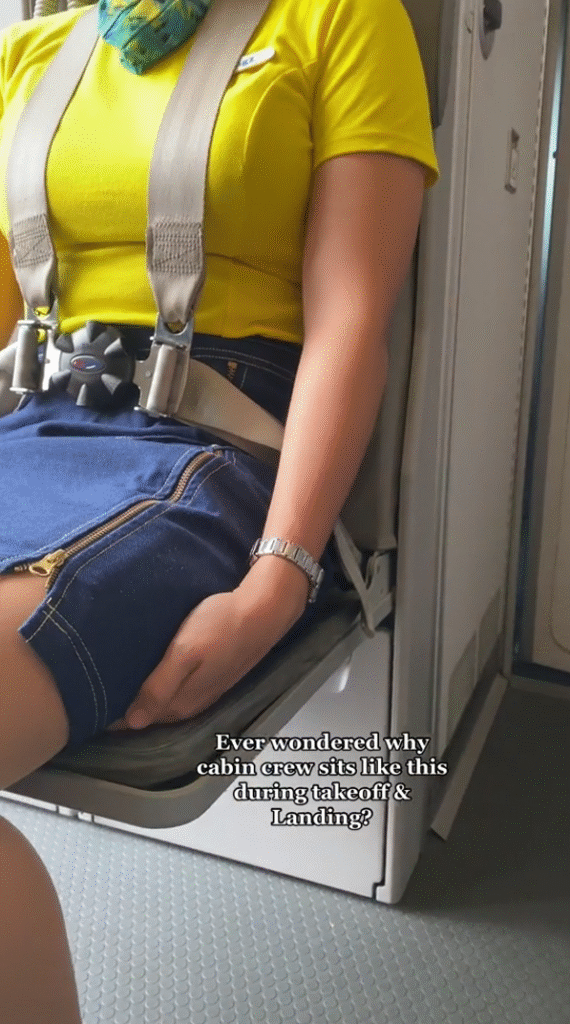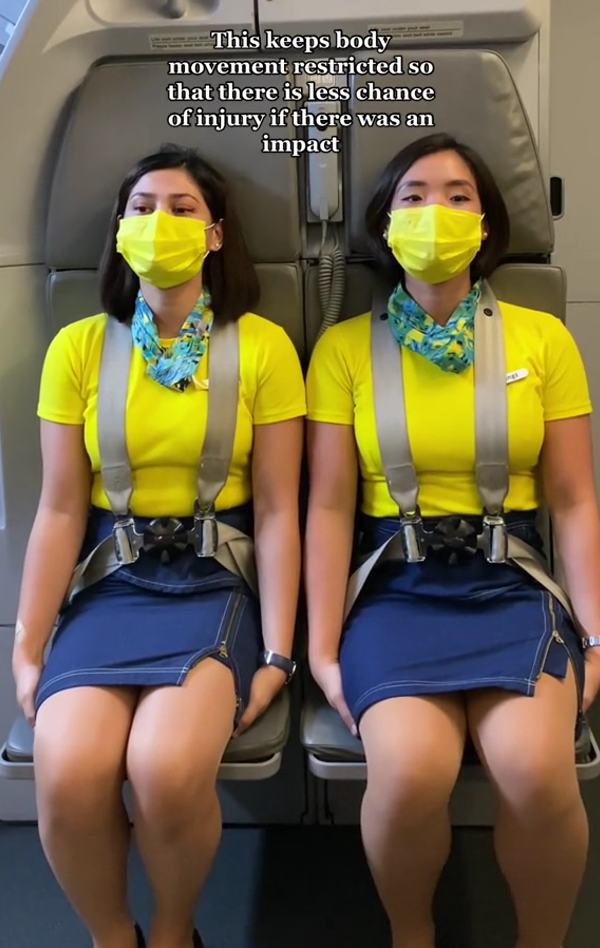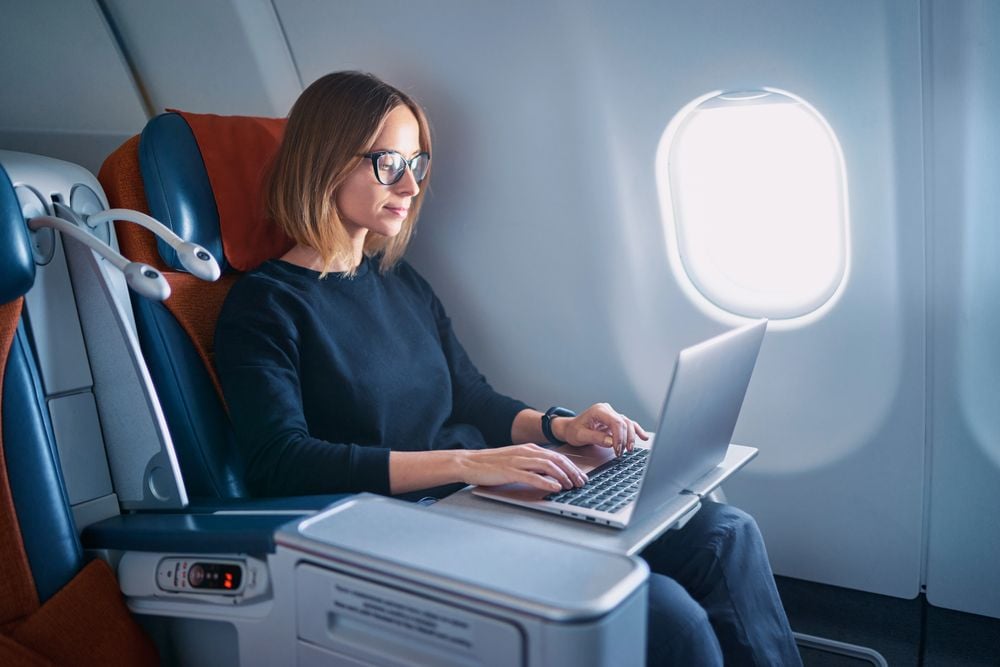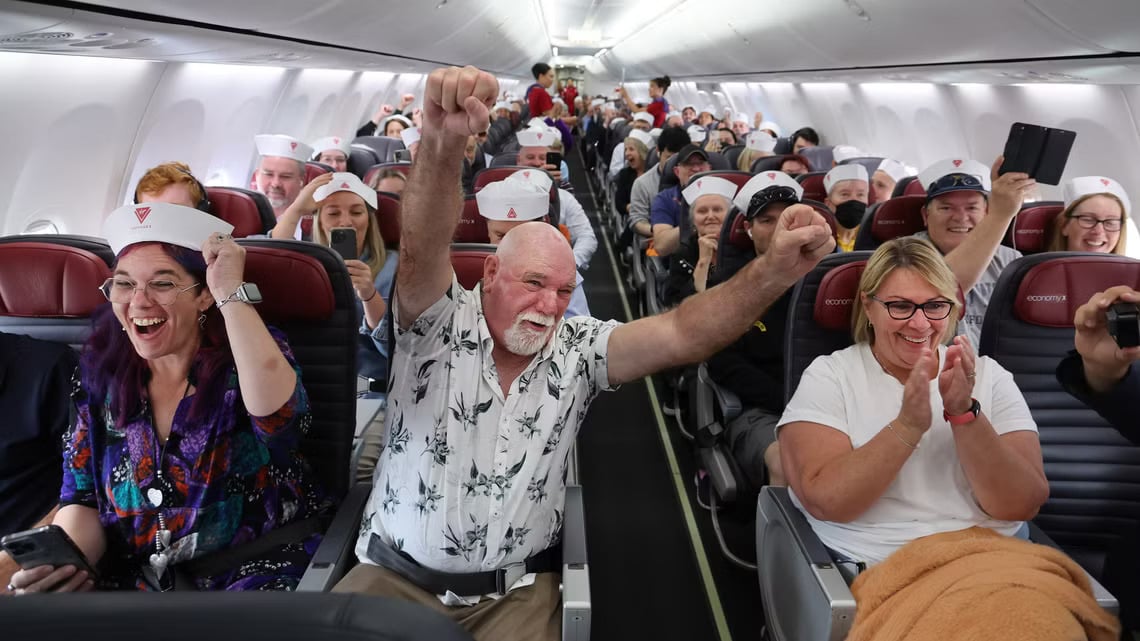Why Do Cabin Crew Sit on Their Hands During Takeoff and Landing?
When you think of flight attendants, you might simply picture friendly faces serving drinks and guiding passengers to their seats. But that’s not there to be a flight attendant.
But behind those heartwarming smiles and good services, they’re highly well-trained professionals. They have set to deliver critical solutions to a range of problems and needs. In simple terms, they ensure the safety and well-being of everyone on board.
And so, among the many procedures they’re trained to follow, one curious ritual often goes unnoticed by passengers – the silent moment during takeoff and landing when flight attendants sit upright, hands tucked under their thighs.

This isn’t just a quirky habit – it’s a deliberate safety measure that is rooted in aviation safety protocol.
Therefore, what does this habit or procedure mean or what’s its relevance? Well, let’s have a look.
Why the Bracing Position Is Crucial as Per Flight Attendant
If you are a frequent flyer, then this habit might be a familiar sight for you. Flight attendants are seated upright, hands tucked under their thighs, eyes focused ahead as the aircraft prepares to take off or land.
For most of us, this often seems an unusual posture and even puzzling to some. However, there is a good reason behind it.
First of all, this posture is known as “bracing position,” and in a viral TikTok clip, Cebu Pacific flight attendant Henny Lim helped shed light on the procedure. Lim explains that this isn’t a random posture but rather a safety protocol that isn’t random carefully designed to minimize injury during emergencies.
As Lim explains, the bracing position involves several deliberate steps: sitting upright, fastening the seatbelt securely, placing both hands on the thighs with thumbs tucked in, keeping the arms relaxed, and ensuring both feet are firmly flat on the floor.
Its simple posture that plays a crucial safety role for the flight attendants.
Why the Bracing Position Matters
The main objective of the bracing position consists of limiting body movement to decrease the chance of injuries when performing an emergency landing. Flight attendants adopt a firm seat position while wearing their seatbelts to maximize their chances of surviving intense forces that might happen during an emergency impact.
Physical preparation stands as a single component of the complete process. During this time Cebu Pacific flight attendant Henny Lim teaches crew members to perform a silent review which serves as a mental emergency procedure drill.
Flight attendants perform door operation checks and identify essential safety equipment before memorizing evacuation instructions while scanning for dangers outside the aircraft. During this focused period, crew members verify their readiness to respond fast in case emergency situations arise.

What Aviation Authorities Say About the Bracing Position
According to Federal Aviation Administration (FAA) aviation regulatory standards, the bracing position stands vital for increasing safety measures for passengers and crew members. The FAA officially states that this position helps passengers reduce their body flailing during crashes while protecting them against secondary impact injuries.
Additionally, passengers and crew should avoid uncontrolled limb movements during crashes because it create serious injuries. The bracing position creates stability through its posture which helps minimize dangerous movements.
Therefore, people who position their body and head to face likely impact surfaces can decrease secondary impact forces which leads to reduced injuries upon impact.
Flight Attendants’ Views on In-Flight Safety
Flight attendants who use TikTok and other social platforms to teach safety procedures have recently started have become a trend. For instance, the way Henny Lim demonstrates the bracing position represents crew members who use social media platforms to share advanced knowledge about in-flight safety.
Another example is Flight attendant Destanie, who shares and reveals surprising stories that show how much passengers will do to improve their seating position. The entertaining stories reveal the necessity to adhere to safety guidelines and show appreciation for flight attendants who prioritize passenger safety.

The Challenges and Rewards of Being a Flight Attendant
Just like in any other profession, there are rewards and challenges of being a flight attendant. And according to Destanie and Esther Sturrus, here are some of the challenges and rewards they face:
Challenges:
- Dealing with difficult or unruly passengers
- Working long hours, often across different time zones
- Navigating high-pressure situations, especially during emergencies
- Spending extended periods away from family and home
Rewards:
- The opportunity to travel the world
- Experiencing diverse cultures and destinations
- Building strong bonds with crew members
- Enjoying a unique and dynamic lifestyle
Both Destanie and Esther demonstrate great gratitude for the professional opportunities their job presents even though it requires substantial effort. The crew members maintain an unwavering dedication to protecting the safety of their passengers.






